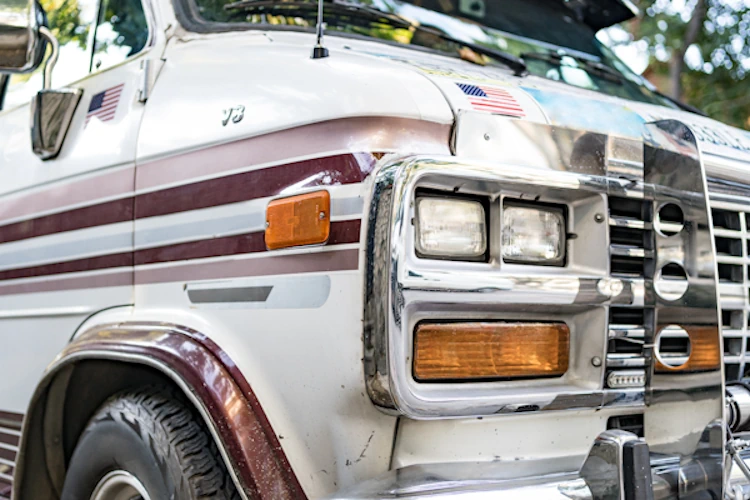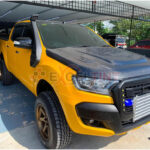In the realm of vehicle safety accessories, nudge bars stand as stalwart guardians, providing protection against collisions and enhancing safety for both occupants and pedestrians. Understanding the purpose and benefits of nudge bars is essential for every vehicle owner, whether navigating urban streets or venturing off-road. In this comprehensive guide, we delve into the intricacies of nudge bars, exploring their safety benefits, practical applications, and factors to consider before installation.
Understanding Nudge Bars
Definition and Function
Nudge bars, also known as bull bars or push bars, are robust metal structures mounted to the front of vehicles. They serve as a buffer between the vehicle’s body and potential hazards, such as collisions with other vehicles, pedestrians, or wildlife. These bars are typically made from durable materials such as steel or aluminum and are designed to absorb impact forces, minimizing damage to the vehicle’s front end.
Types of Vehicles They Are Compatible With
Nudge bars are compatible with various types of vehicles, including trucks, SUVs, and off-road vehicles. Their versatility makes them popular among drivers who prioritize safety and ruggedness in their vehicles.
Safety Benefits of Nudge Bars
Protection against Collisions
Collisions on the road are an unfortunate reality, but nudge bars can significantly reduce their impact. By absorbing the force of a collision, nudge bars help mitigate damage to the vehicle’s front end, including the radiator, headlights, and grille. This not only safeguards the vehicle but also minimizes repair costs and downtime.
Pedestrian Safety
Nudge bars play a crucial role in pedestrian safety by reducing the severity of collisions. In the event of an accident involving a pedestrian, the bar provides a cushioning effect, potentially mitigating injuries. Furthermore, many regions have regulations in place that mandate the installation of nudge bars to enhance pedestrian safety, particularly in urban areas with high foot traffic.
Wildlife Collisions
For drivers traversing rural or wooded areas, wildlife collisions pose a significant risk. Nudge bars act as a protective barrier, reducing the likelihood of injuries to both the vehicle occupants and animals. Studies have shown that vehicles equipped with nudge bars are less likely to sustain severe damage in wildlife collisions, highlighting their importance in regions with abundant wildlife populations.
Practical Applications
Nudge bars find practical applications in various driving environments, from city streets to rugged off-road terrain. In urban settings, they provide added protection against minor fender benders and parking lot mishaps. Off-road enthusiasts rely on nudge bars to safeguard their vehicles during adventurous journeys, where encounters with rocks, branches, and other obstacles are common.

Factors to Consider When Choosing Nudge Bars
Material and Construction
The material and construction of nudge bars play a crucial role in their effectiveness and durability. Steel nudge bars offer maximum strength and durability, making them ideal for off-road use. Aluminum bars, on the other hand, are lighter and may appeal to drivers seeking a balance between strength and weight.
Design and Compatibility
When selecting a nudge bar, it’s essential to consider its design and compatibility with your vehicle model. Many manufacturers offer custom-designed nudge bars tailored to specific makes and models, ensuring a seamless fit and optimal protection. Additionally, some nudge bars come with integrated mounting points for auxiliary lights or winches, enhancing their versatility and utility.
Installation and Maintenance
Proper installation and maintenance are critical to maximizing the effectiveness of nudge bars. Installation typically requires mounting the bar to the vehicle’s chassis or frame using sturdy brackets and bolts. It’s essential to follow the manufacturer’s instructions carefully and seek professional assistance if needed. Regular maintenance, such as cleaning and inspecting the nudge bar for signs of wear or damage, can prolong its lifespan and ensure continued protection.
Addressing Common Concerns
Legality and Regulations
Before installing a nudge bar, it’s essential to familiarize yourself with local traffic laws and regulations regarding their use. Some regions impose restrictions on the size and design of nudge bars to ensure they do not impede the functionality of safety features such as airbags or obstruct the vehicle’s headlights.
Impact on Airbag Functionality
One common concern among drivers is the potential impact of nudge bars on airbag functionality. Modern vehicles are equipped with sophisticated airbag systems designed to deploy in a fraction of a second in the event of a collision. Properly installed nudge bars should not interfere with airbag deployment, but it’s essential to verify compatibility with your vehicle’s safety systems before installation.








